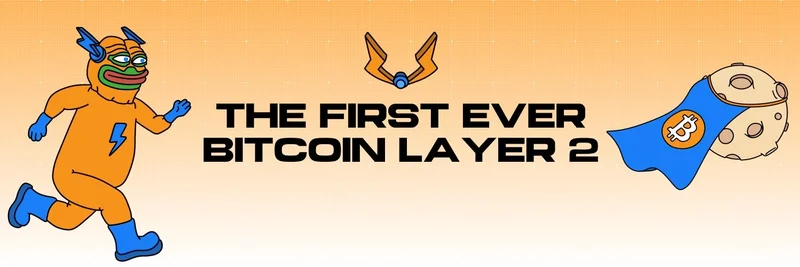TL;DR
- The address 0x208042a2012812f189e4e696e05f08eadb883404 corresponds to HYPER on Ethereum (ERC-20), associated with the Bitcoin Hyper initiative.
- Bitcoin Hyper aims to bring a fast, smart-contract-enabled Layer 2 to Bitcoin using the Solana Virtual Machine (SVM), batching transactions and settling back to Bitcoin with zero-knowledge (ZK) proofs.
- The HYPER token is used for fees, staking, governance, and potential launchpad access in the ecosystem.
- Multiple projects use “HYPER,” so always verify the exact contract and network before interacting.
Quick network clarification
There’s common confusion around “HYPER” across chains. The specific address here is on Ethereum, not BNB Chain. Separate projects like Hyperlane (HYPER) use different contracts per chain (for example, a distinct address on BNB Chain) and are unrelated to this token address. Always confirm you’re interacting with the correct HYPER and the correct network.
For contract verification, you can check the token page on Etherscan.
What is Bitcoin Hyper?
Bitcoin Hyper is positioned as a Bitcoin-focused Layer 2 that brings the speed and flexibility of modern smart contract chains to the Bitcoin ecosystem. It uses the Solana Virtual Machine (SVM)—the same runtime behind Solana—to deliver high throughput and sub-second block times while aiming to keep settlement anchored to Bitcoin.
- Solana Virtual Machine (SVM): A high-performance execution environment designed for parallel processing and fast finality. In simple terms, it lets developers and users enjoy Solana-like speed on a Bitcoin-linked rollup.
- ZK rollup settlement: Transactions are bundled, proven with cryptographic zero-knowledge proofs, and then committed to Bitcoin. This improves scalability while maintaining Bitcoin’s security guarantees.
How the system works (in plain English)
- Deposit BTC: Users send BTC to a verified Hyper address.
- Mirror on Layer 2: A smart contract reads Bitcoin blocks to confirm the deposit. Then, a 1:1 mirrored BTC representation is minted on the Hyper Layer 2.
- High-speed activity: Within this SVM-based environment, users can trade, stake, or use DeFi apps with near-zero fees and fast confirmations.
- Secure settlement: Transactions are batched, validated with ZK proofs, and committed back to Bitcoin Layer 1 for finality.
Developers can deploy smart contracts using familiar Solana tooling (e.g., standard CLI workflows), but the execution is tied to this Bitcoin-anchored Layer 2.
HYPER token utility
The native token, HYPER, supports the network and ecosystem:
- Transactions and gas fees: Pay for execution on the Hyper Layer 2.
- Staking: Stake HYPER to earn rewards and help secure the network.
- Governance: Influence protocol parameters and roadmap decisions.
- Launchpad access: Potential access to new dApps launched within the ecosystem.
Some sources mention a 21 billion total supply with allocations for treasury, marketing, rewards, listings, and development. As always, verify the tokenomics for the specific contract you interact with (especially if you’re referencing the ERC-20 at the address above).
Market presence and community notes
Bitcoin Hyper has run a presale with multi-chain payment support (BNB, ETH, USDT, USDC, SOL) and even card payments, aiming to maximize accessibility. Commentators have described HYPER as a hybrid of utility and meme culture, tapping into the growing interest in Bitcoin-native execution layers and cross-chain liquidity.
The team shares updates via official channels like Telegram and X (Twitter). If you follow along, make sure you’re on the real profiles—start from links on the official website and avoid impersonators. Even the generic Telegram web interface is fine for access, but seek project-verified links first.
Name collisions to watch out for
- Hyperlane (HYPER): An interoperability protocol with its own token and different contract addresses per chain, including BNB Chain. Not the same as Bitcoin Hyper.
- HyperCoin NFT or similar “Hyper” brands on other chains (e.g., Solana): Unrelated to the Ethereum address here.
Double-check symbols, contract addresses, and official domains to avoid mix-ups.
How to research and trade HYPER
Before trading any token, verify the address, review the docs, and consider on-chain activity:
- Contract verification: Etherscan
- Project site: bitcoinhyper.com
- Technical background (SVM): Solana runtime docs
- Name collision reference: Hyperlane docs
If you choose to trade HYPER, you can explore:
- GMGN.AI: View analytics and trade via the HYPER page here: https://gmgn.ai/eth/token/fV1R5sZ5_0x208042a2012812f189e4e696e05f08eadb883404
- Uniswap: Use the contract address to find the correct pool and avoid impostors. Example entry point: app.uniswap.org
- DEX analytics: Platforms like DEXTools can help you review liquidity, pairs, and recent trades.
Tip: Always paste the exact contract address when searching on exchanges and analytics sites to ensure you’re looking at the right HYPER.
Risks and best practices
- Volatility: Meme-driven narratives can amplify price swings—never risk more than you can afford to lose.
- Contract mix-ups: “HYPER” exists across multiple projects and chains. Confirm the network (Ethereum) and the exact address before interacting.
- Smart contract risk: Even Layer 2s and rollups carry technology risk. Monitor audits, updates, and community feedback.
- Presale/launch dynamics: Token allocations and cliffs can change near-term supply. Verify vesting, circulating supply, and treasury controls via official sources.
Final word
Bitcoin Hyper’s pitch—Solana-speed execution anchored to Bitcoin—makes it one of the more ambitious projects riding both the utility and meme waves. If you’re exploring HYPER, start with contract verification, read the docs, and use trusted platforms when researching and trading.


